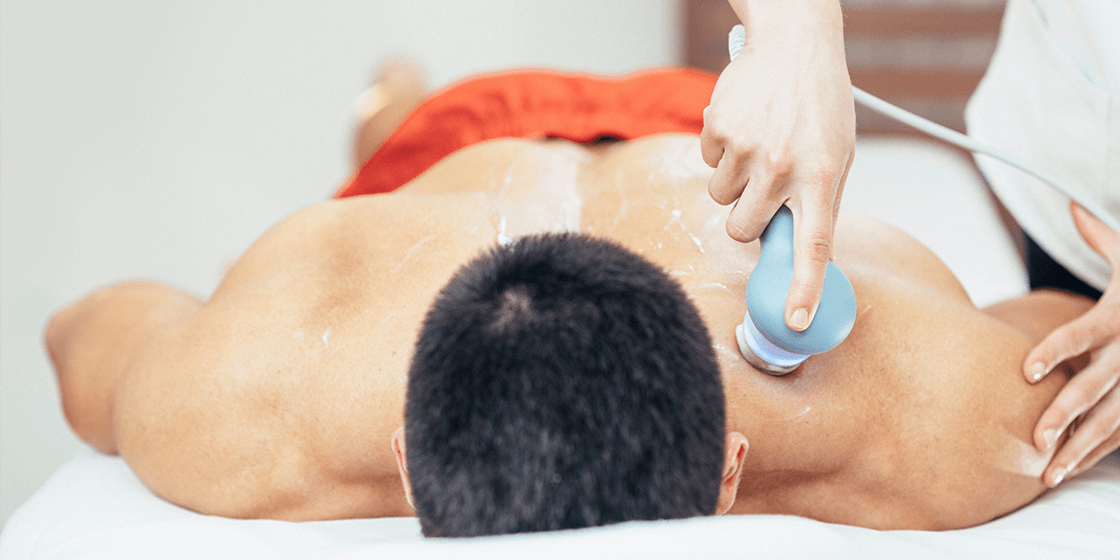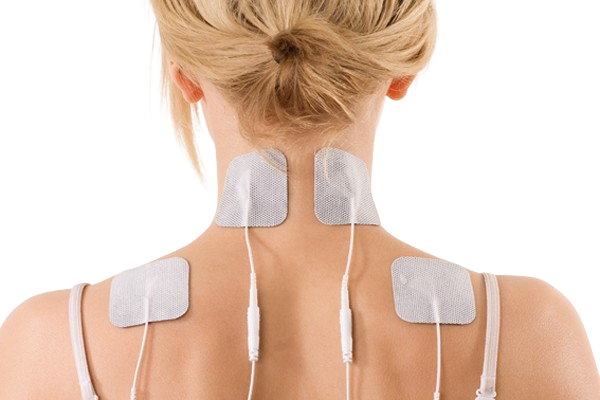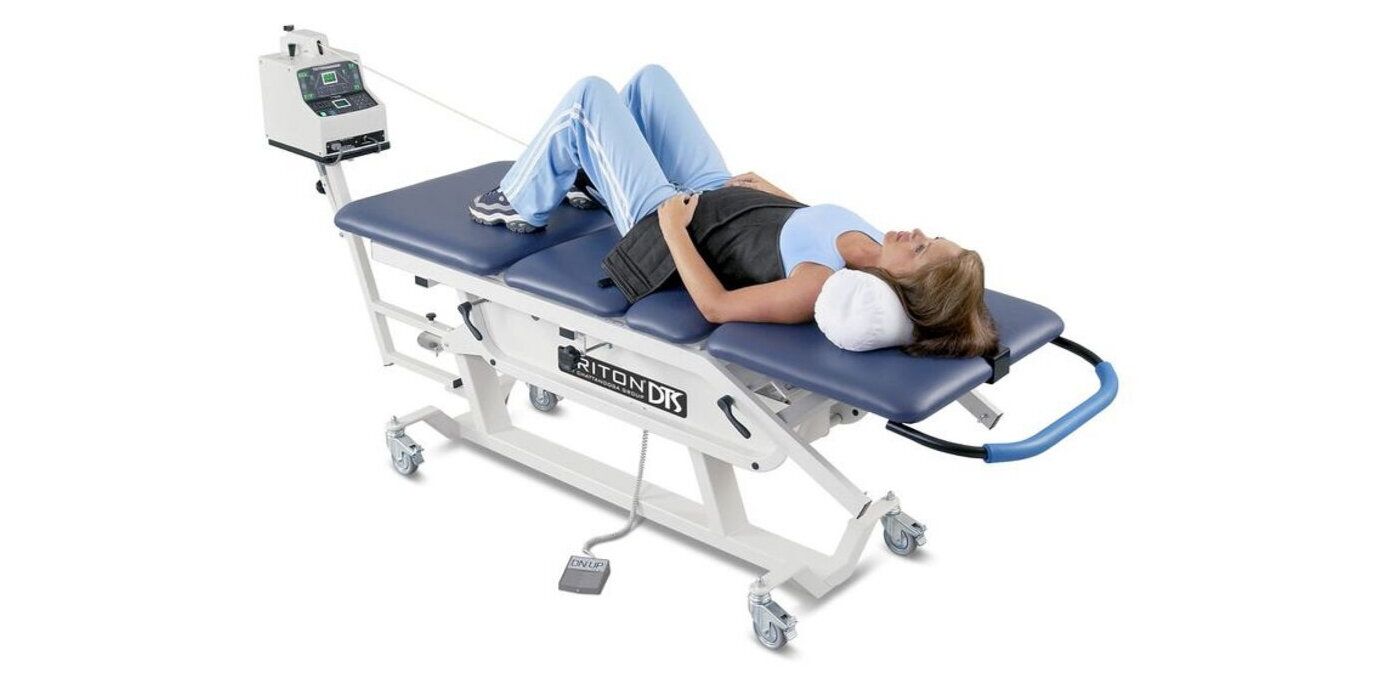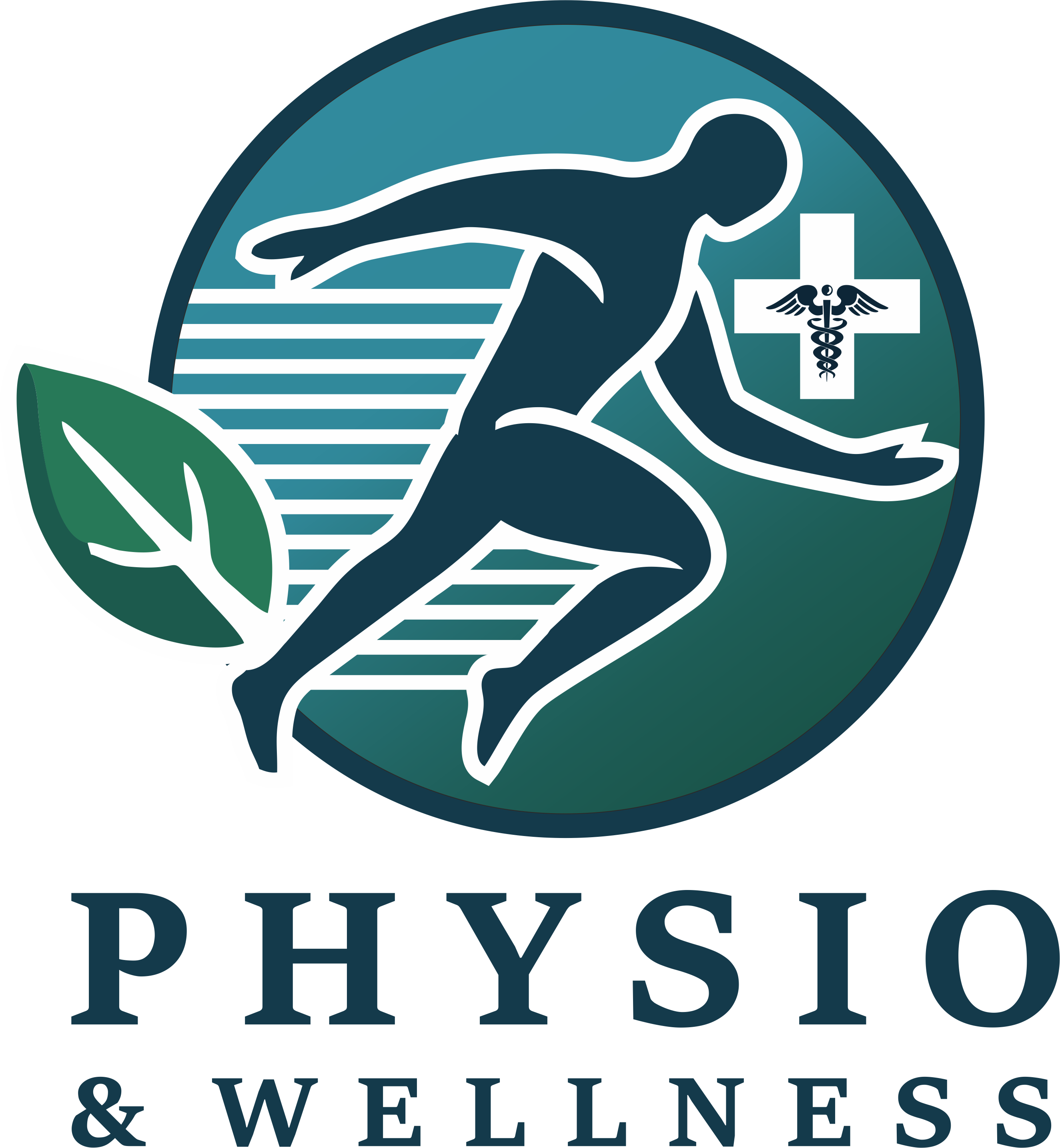Interferential Therapy (IFT)
Interferential Therapy (IFT) is a highly effective electrotherapy treatment that uses two medium-frequency electrical currents to target pain, inflammation, and muscle dysfunction. By delivering deep tissue stimulation, IFT helps alleviate both acute and chronic pain, reduce muscle spasms, and improve circulation. It also accelerates tissue repair, promotes healing, and reduces swelling, making it a valuable tool in physiotherapy for faster recovery.
The therapy also plays a crucial role in reducing swelling (edema) and promoting faster recovery by stimulating the body’s natural healing processes. With its ability to treat a range of conditions safely and without the need for medication.

Ultrasonic Therapy
Ultrasonic Therapy is a therapeutic technique that uses high-frequency sound waves to promote healing and reduce pain in soft tissue injuries. The sound waves penetrate deep into the tissues, causing vibrations that increase blood flow, reduce inflammation, and accelerate tissue repair. This therapy is commonly used in physiotherapy to treat conditions like tendonitis, bursitis, and muscle strains. Ultrasonic therapy helps reduce swelling, alleviate pain, and stimulate collagen production, which is crucial for tissue regeneration. It is particularly effective in targeting deep muscle and joint injuries .Ultrasonic therapy is a safe and efficient option for enhancing rehabilitation and improving mobility.

Nerve Muscle Stimulation
Nerve Muscle Stimulation (NMS) is a therapeutic technique that uses electrical impulses to stimulate muscles and nerves, helping to improve muscle function and promote recovery. By delivering low-frequency electrical currents, NMS mimics the natural signals from the nervous system, causing muscle contractions. This therapy is particularly beneficial for patients with muscle weakness, paralysis, or neuromuscular disorders.
NMS helps strengthen muscles, reduce muscle atrophy, improve circulation, and enhance overall muscle tone. It is commonly used in rehabilitation after surgery or injury, as it accelerates recovery by preventing muscle degeneration and improving motor control. NMS also aids in pain relief and enhances the effectiveness of physical therapy exercises, making it an essential tool in rehabilitation programs.

Laser Therapy And Micro-Currents
Laser Therapy & Microcurrents are advanced therapeutic modalities used in physiotherapy to promote healing, reduce pain, and enhance tissue repair. Laser therapy utilizes low-level lasers (or light-emitting diodes) to penetrate the skin and stimulate cellular activity, promoting increased circulation, reduced inflammation, and accelerated tissue healing. It is particularly effective in treating musculoskeletal injuries, joint pain, and soft tissue damage
On the other hand, Microcurrent therapy uses low electrical currents to stimulate cells at the tissue level, promoting the body's natural healing processes. It helps enhance cellular regeneration, reduce pain and inflammation, and improve muscle function. Both therapies are non-invasive, painless.

Tens Therapy Machine
TENS Therapy (Transcutaneous Electrical Nerve Stimulation) is a non-invasive treatment that uses low-voltage electrical currents to provide pain relief. Electrodes are placed on the skin over the area of pain, and the electrical impulses help to block pain signals from reaching the brain, offering immediate relief. TENS therapy also stimulates the production of endorphins.
This therapy is widely used to treat conditions such as arthritis, muscle strains, joint pain, and post-surgical recovery. It is safe, easy to use, and can be applied at home or in a clinical setting. TENS therapy effectively reduces inflammation, improves blood flow.

Cervical And Lumbar Traction
Cervical and Lumbar Traction are therapeutic techniques used in physiotherapy to relieve pain and discomfort caused by pressure on the spine. Cervical traction targets the neck region, while lumbar traction focuses on the lower back. These therapies involve applying a gentle, controlled pulling force to stretch the spine, alleviate pressure on the discs, nerves, and muscles, and improve spinal alignment.
Cervical traction is often used to treat conditions like neck pain, herniated discs, and cervical radiculopathy, while lumbar traction is beneficial for conditions such as sciatica, lower back pain, and degenerative disc disease. The traction helps to reduce muscle spasms.



.png)